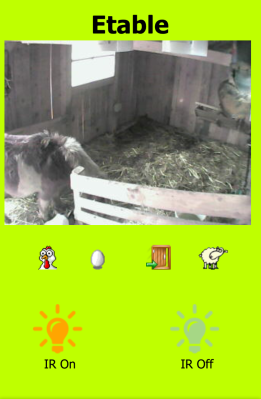Life down on the farm isn’t easy, and a little technology can go a long way to making things easier for the farmer. It’ll be a while before any farmer can kick back on the beach and run his place from a smartphone, but that’s clearly the direction things are heading with this small farm automation project.
 [Vince]’s livestock appears to consist of chickens and sheep at this point, and the fact that they share housing helped him to deploy some tech for both species. The chickens got an automated door that lets them out in the morning and shuts them in safely once they’ve returned to roost for the night – important protection against predators. The door is hoisted by a Somfy window-treatment motor, which seems a little on the overkill side to us; a thrift-store electric drill and a homebrew drum might have worked too. A Teensy with an RTC opens and closes the door according to sunrise and sunset times, and temperature and humidity sensors provide feedback on conditions inside the coop. The sheep benefit from a PTZ webcam to keep an eye on their mischief, and the whole thing is controlled by a custom web interface from [Vince]’s smartphone.
[Vince]’s livestock appears to consist of chickens and sheep at this point, and the fact that they share housing helped him to deploy some tech for both species. The chickens got an automated door that lets them out in the morning and shuts them in safely once they’ve returned to roost for the night – important protection against predators. The door is hoisted by a Somfy window-treatment motor, which seems a little on the overkill side to us; a thrift-store electric drill and a homebrew drum might have worked too. A Teensy with an RTC opens and closes the door according to sunrise and sunset times, and temperature and humidity sensors provide feedback on conditions inside the coop. The sheep benefit from a PTZ webcam to keep an eye on their mischief, and the whole thing is controlled by a custom web interface from [Vince]’s smartphone.
There’s just something about automating chicken coop doors that seems to inspire hackers; check out this nice self-locking design. As for [Vince]’s farm, it looks like his system has a lot of room for expansion – food and water status would be a great next step. We’re looking forward to seeing where he goes from here.













